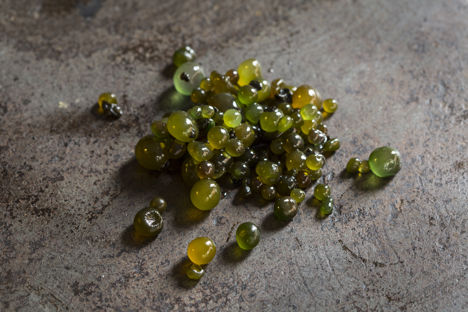
Rags to riches: meet the humble stars of fine dining menus
Discover the ingredients from around the world which have made the leap from local staples to major players on the global culinary stage. From pearls of Peruvian rainwater to rustic Sicilian courgette leaves, these ingredients are causing quite the stir among foodies in the know.
Rags to riches: meet the humble stars of fine dining menus
Discover the ingredients from around the world which have made the leap from local staples to major players on the global culinary stage. From pearls of Peruvian rainwater to rustic Sicilian courgette leaves, these ingredients are causing quite the stir among foodies in the know.
View more from this series:
Ingredient focusLichen
As lichen's stock rises in the culinary world you'll kick yourself for all the times you went on hearty country walks and passed by trees, walls and crumbling old buildings covered in crinkly fungus without scraping some into your pocket. Forms of lichen have been incorporated into human diets within cultures around the world for centuries and is particularly associated with Scandinavia, North America and parts of India (kalpasi, a form of lichen with a distinctive woody flavour, is commonly used as a spice in Chettinad cuisine). Given this connection to Scandinavian traditions it is unsurprising, then, that René Redzepi of Noma was one of the first Michelin-starred chefs to launch lichen on the gourmet stage, although Britain's own Sat Bains has also been a strong proponent. Incorporating lichen powder into a venison tartare dish, Sat Bains matches the earthy natural flavour of lichen with mushrooms, smoked mayonnaise and bitter chocolate powder to counter the natural sweetness of deer.
Cushuro
While you won't find lichen winning any beauty contests, cushuro, on the other hand, possesses an otherworldly allure which has seen its popularity rocket in recent years. It is, as Lima's Robert Ortiz described it, 'natural caviar' and is found in Peru where rainwater from the Andes solidifies in the cold air before hitting the ground. Through this process the balls absorb plant proteins and striking colour from the grass and ground, meaning no two cushuro look the same. In Peru they are often used to add nutritional might to vegetable stews, although it is arguably their aesthetic qualities which appeal to chefs. Ortiz recently featured cushuro on the menu at Lima in a dish celebrating the Peruvian landscape, with cushuro, kiwicha and edible flowers creating an earthy base for toasted ants to sit on.
Tinniruma
Like so many food trends, tinniruma lived a long and peaceful life as a cheap and plentiful ingredient favoured by Sicilian families before chefs discovered its potential. The sturdy green stalks come from the Sicilian vegetable cucuzza (a word which also means 'useless person' in Italian slang, so avoid bellowing it across a supermarket if you can) and work beautifully in soups, stews and pasta dishes or simply served as a side dish with a little hit of garlic and chilli. Pino Cuttaia, one of the earliest advocates of tinniruma as a gourmet ingredient, pairs the leaves with onion and ricotta to create a creamy filling for his elegant seafood ravioli.
Seaweed
While seaweed has formed a staple part of cuisines around the world for centuries it's a relative newcomer in the world of fine dining outside of Japanese cuisine. Making up for lost time, seaweed has been hailed as one of this year's major food trends and dishes garnished with a liberal dusting of powdered nori is a not uncommon sight on dishes in fine dining establishments around the country. To make your own, simply blitz two sheets of nori in a food processor to form a fine powder and use to add a dramatic hit of colour to canapés, salads and seafood dishes.
Agretti
Agretti, the so-called 'land seaweed' native to Italy, looks a little like a sleeker, less knobbly samphire. The two plants are, in fact, related, but the comparatively mild taste of the former means it is widely used beyond merely seafood dishes. While it has long been considered a delicacy in Italy, increased exposure on television and restaurant menus has resulted in rocketing demand from both chefs and home cooks alike. The traditional Italian way of preparing agretti is simply paired with lemon juice and olive oil – Cristina Bowerman tops her agretti salad with a juicy veal fillet for a vibrant, oh-so-Italian supper.
We've had mould, insects, rain and seaweed embraced by the culinary world, but what next? Let us know which humble ingredients you think will be the next major food trend in the comments below.


